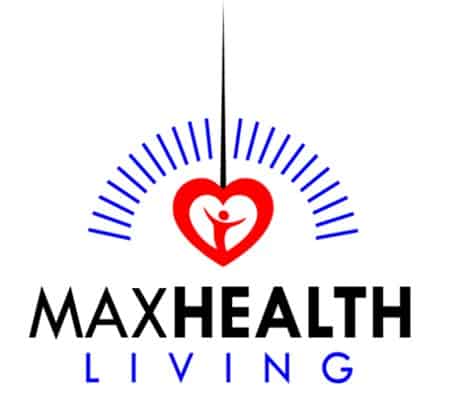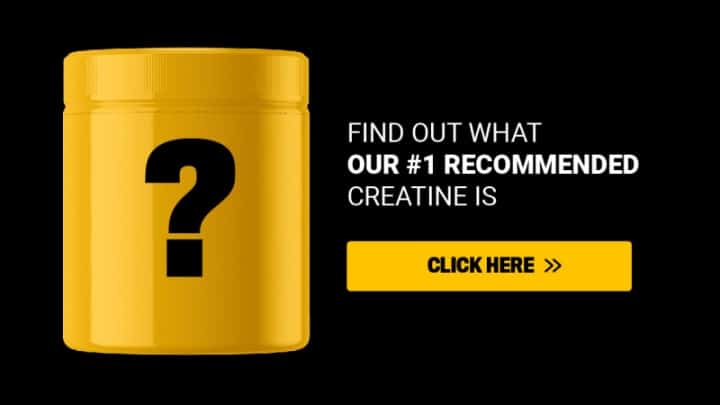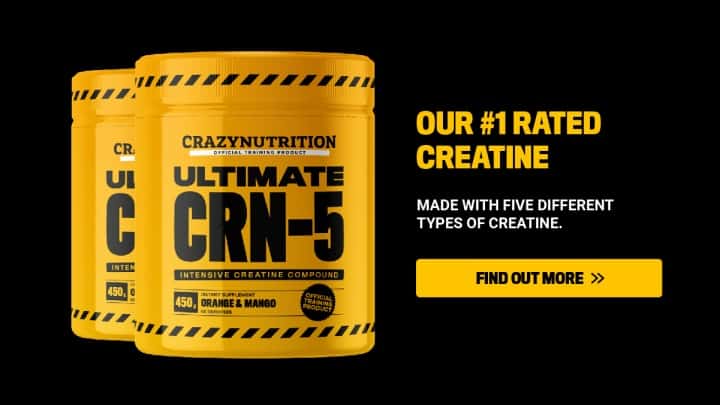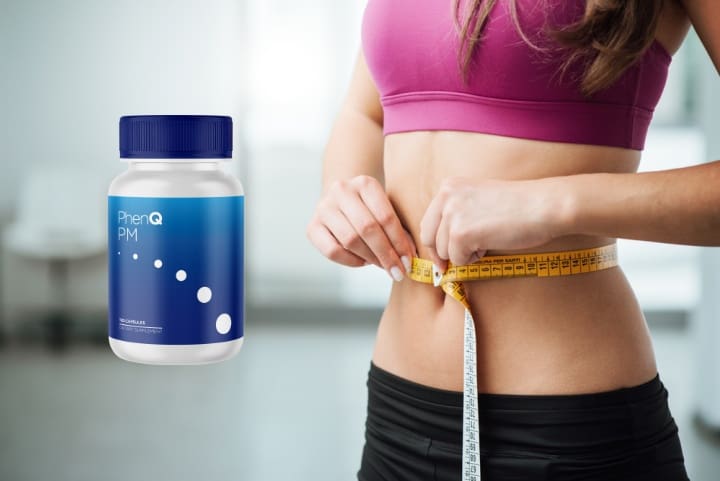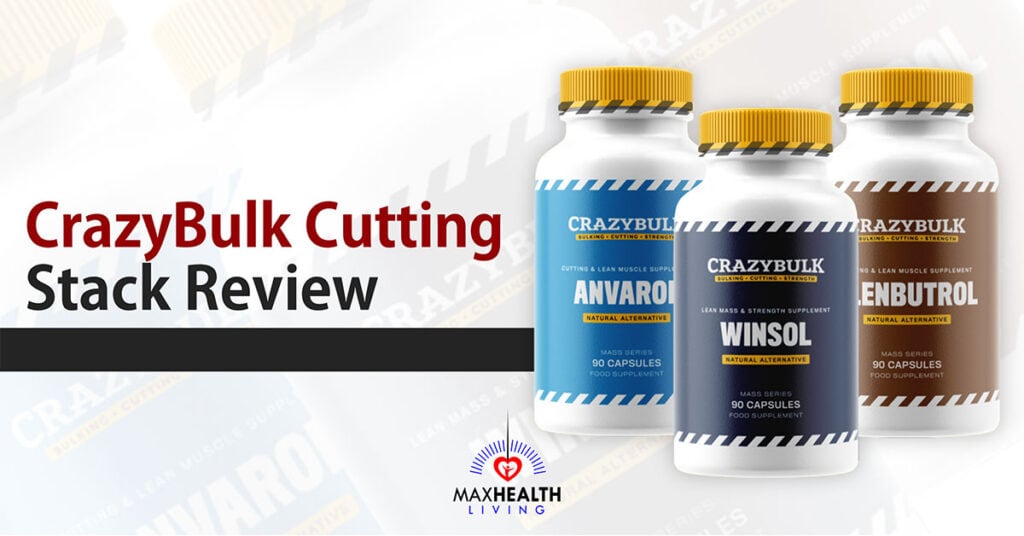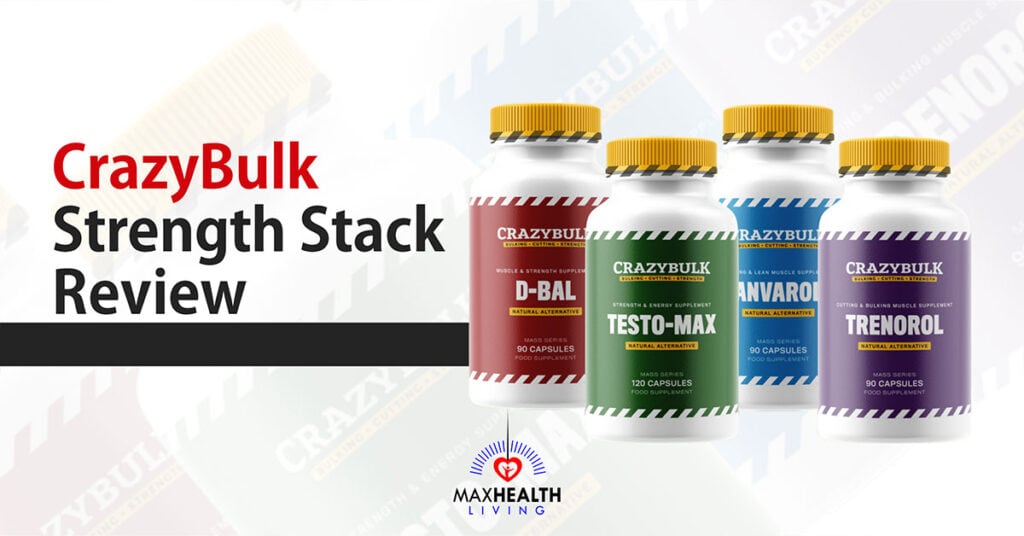39+ Creatine Statistics (Insights on Use, Death Rate & Effects)
Max Health Living is a reader-supported site. Purchases made through links may earn a commission. Learn more.
Creatine is the most popular and well-studied ergogenic aid used among athletes and normal people for health and workout performance. Owing to its popularity, the global creatine market is projected to grow at a CAGR of 6.5% in these 5 years and stand at $520 million by 2024.
The prevalence of creatine use is comparable to the popularity of whey protein but this doesn’t mean that anyone can start its supplementation. It is important to know the facts about creatine to avoid undesirable effects.
To help you with this, I have assembled 40+ insightful creatine statistics with all you need to know about this world’s favorite performance-boosting pseudovitamin.
Creatine Use Statistics
- Creatine sales are estimated at around 400 million dollars per year worldwide – making it one of the most popular and regularly used supplements worldwide.
- Around 14% of athletes use creatine supplementation in 1 year, likely with a much higher percentage using them across the lifespan of training. Remember that this is also specific to sports – where some get more benefits than others from Creatine.
- Creatine use is almost seven times higher in teen boys than girls (8.8% vs. 1.8%), as expected from the more muscle-building-focused approach younger men take compared to women.
- Creatine is the world’s most popular and well-studied ergogenic aid and performance booster, with 1000s of recorded studies across various applications and test subjects.
- Creatine is primarily a cell health supplement but has become popular for muscle cells due to its athletic benefits and cheap pricing. This has made it a great choice for health, but most people overlook these benefits.
- 64% of studies on Creatine showed an increase in total lean body mass, making it a great choice for supporting muscle growth and justifying its overall popularity.
Creatine Monohydrate Statistics
- An ISSN (International Society of Sports Nutrition) position reviewed studies on Creatine monohydrate effects and reported that it improves cortical (outer layer of brain) damage by 36 to 50%.
- A creatine study results published in 2023 revealed that creatine monohydrate improves performance during a bench press exercise. The researchers observed that compared to the placebo, creatine monohydrate supplementation enabled the participants to achieve a significantly higher number of repetitions in Set 1 (14.8 VS. 13.6) and Set 2 (8 VS. 6.7).
- A recent RCT reported that a 5 g creatine dose is effective in causing approximately a 2.8% increase in upper and a 7.3% increase in lower body strength.
Creatine In Sports
- Are you wondering do athletes take creatine? The answer is yes, youth athletes use Creatine at higher levels – around 34% of young creatine users ascribe its use to sports performance, and up to 44% across a whole high school sports career.
This is relatively high for young people and seems to be even higher than in mature athletes – who may have more control over their dietary habits.
- Swimming is among the highest proportion of creatine users in high school sports, with 25% of surveyed high school swimmers using Creatine at a given time. Swimmers typically have the perfect timeline in shorter distances where creatine support may match perfectly with their output through heat or training.
- Among Division 1 athletes, usage is higher, at around 28%, though some sports report significantly higher usage rates. This makes sense, as these athletes can control their dietary intake and take the sport more seriously.
- The use of Creatine in the military is common, at around 30-35% in some studies – an application that most people never consider.
- Creatine can be great for improving performance in higher-intensity exercise and under duress from fatigue and heat exhaustion.
Creatine Effects Statistics
- Creatine is a swelling cell aid that supports growth and better DNA protection, causing around 40% more cell volume in some rodent studies. This is great for muscle building, too, and may be one of the most important factors for improving muscle gains.
- Creatine absorbs around 87% of its total weight due to a breakdown in the digestion process. Considering this, a simple creatine how-to-use guide that might help you adjust your dosage is that people prefer using 3g rather than the “clinically effective” 2.5g to make up for losses.
- Creatine is very easy to absorb – with around 80-100% of any digested supplementation being taken into the system (anywhere from 69.6% to 87% of a dose being absorbed effectively).
- Creatine can improve power output by an extra 78% compared to non-creatine use in some studies, helping get more results from the same workout program.
- In the normal recommended dose (2.5 – 25g), absorption is typically over 99%, making it a great choice regardless of brand or format. This means that any creatine source that is free from contaminants and in your price range will be effective.
- Creatine is quite fast-absorbing, able to increase internal levels by 800% in a single hour – which makes it good for pre-, intra-, and post-workout supplementation. It’s also a great sign that your Creatine will be effective in the short term.
- Taking Creatine with carbohydrates supports carb uptake, boosting glycogen storage by around 40%. This is perfect news for pre-, intra-, and post-workout creatine use when combined with diluted fruit juice and other support carbohydrates for your workout.
- Creatine can improve muscle glycogen uptake – specifically after exercise, where it protects against a muscle-damage-induced limitation to carb re-uptake, helping support exercise recovery.
- Creatine uptake after exercise can increase absorption up to 65% or more, making it a great choice for improving the total effects. This is most likely in the rehydrating process, a key part of post-workout recovery.
- Creatine is an important compound in the brain, which is essential for proper mental development. This is often overlooked but is another reason why Creatine is a great all-around health and performance supplement.
- Your body breaks down around 1.5-2g of Creatine per day (depending on size) – one reason you need to replenish it with food and supplementation. You need to increase your intake if you’re under these numbers from diet and supplementation combined.
- Your first dose of Creatine is often the most effective when frontloading, at around 70% absorption on very high doses, up to 30g – a huge amount.
- Creatine is great for supporting cell health and protecting cell life-cycle by preventing excessive glutamate retention – which can kill cells early. This prevents some of the greater risks of accelerated aging, combatting both stress and environmental contaminants.
- Creatine reduces fatigue experienced in the brain and body alike, even more so in high heat or other stress scenarios, regulating serotonin and dopamine function when using frontloading (20g+) doses.
Creatine Benefits Statistics
- Creatine is a major preventative compound in the onset of Parkinson’s and Alzheimer’s diseases by supporting proper brain energy levels. This makes creatine supplementation a great consideration for older people – as in many other areas.
- Vegetarians with low creatine levels during their teen years can see significant cognitive performance improvements with creatine supplementation. As mentioned above, this needs to be supplemented if daily intake is below the body’s 1.5-2g turnover.
- Elderly people see major mental performance boosts with creatine supplementation, with reduced symptoms of sarcopenia (age-related muscle loss) and dynapenia (strength loss). These are closely related to injury risk and quality of life, making Creatine a superb choice for health as you age.
- Creatine preserves your mental performance when you’re sleep-deprived, protecting you from the worst mental fatigue and exhaustion effects. In these high-stress situations, it is a great support compound for reducing performance loss and protecting health.
- Creatine supplementation has been shown to improve heart health – especially in people with prior heart problems, which may increase function by around 30%. This is another sign that Creatine is not only safe but promotes positive health outcomes in multiple organs.
- Creatine may even improve your cholesterol profile – with some studies showing up to 20% improvements in VLDL (very low-density lipoproteins, “bad cholesterol”) levels which are major contributors to heart disease and blood pressure. Hence, improvement in their levels ameliorates some of the most common problems such as high blood pressure, and heart disease.
- Creatine doesn’t only boost performance but reduces inflammation levels after sprinting workouts and other high-power exercises – protecting muscles and improving immune function.
- Creatine has a modest positive effect on androgen levels in men, specifically DHT (a hormone that shrinks hair follicles and shortens hair growth cycle), which is why some people worry about creatine-induced hair loss. Most users will never experience creatine-related hair loss, except those with a severe genetic vulnerability.
Creatine death rate statistics
- Before all else, it is important to note that death from creatine is uncommon and it is a considerably safe supplement. Still, to avoid fatal outcomes you should adjust your max creatine per day to stay below 25 grams.
Nonetheless, it may become a secondary cause of death if you take it while suffering from health conditions like compromised kidneys or as creatine supplements burden kidney function.
Creatine Stats & Associations – FAQs
Can creatine cause death?
No, according to the research performed to date, creatine is safe to take even at high doses (up to 30 grams per day) for up to five years.
How many studies have been done on creatine
There are about 2766 researches available on creatine on the Pubmed database.
Was creatine ever banned?
No, creatine is not banned. In fact, Creatine monohydrate is generally recognized as safe (GRAS) by the FDA.
Is creatine safe for teens?
Yes, creatine is safe for teens. One piece of evidence is that we get some doses of it from our normal organic diet as well. However, teens should preferably use its supplements under supervision, by young competitive athletes only, and within recommended dosages.
What is Arnold Schwarzenegger’s creatine horror story?
There isn’t any – in fact, Arnold is a big fan of creatine supplements and vouches for their benefits.
Is creatine legal in the Olympics?
Yes, Olympians are allowed to use creatine. Neither the World Anti-Doping Agency (WADA), the International Olympic Committee (IOC), nor the NCAA disallows athletes from using it.
Is creatine scientifically proven?
Creatine has been scientifically proven to be one of the most effective and reliable forms of supplementation on the market for most people. There’s a huge variety of research on Creatine and its applications published in different scientific journals.
However, few people do not respond to creatine, that is they see no benefit.
This could be due to genetic disposition or a diet already rich in food-based creatine sources.
What percentage of people are affected by Creatine?
Around 80% of the population see positive effects from using Creatine, with only around 20% of people reporting a non-response status.
Creatine is an effective and reliable supplement for most of the population.
With around [out of] 15% of the population using Creatine, around 13% of people use and benefit from Creatine every year.
Do Athletes Take Creatine?
Athlete’s creatine use depends on the sport, level of competition, and personal preference.
Around 20% of athletes will use Creatine, with some sports using it more often than others and more younger athletes using Creatine than their older counterparts.
More serious sports – like D1 college competition – can also incentivize creatine use, seeing use rates for Creatine around double that of the average population.
Does The Average Person Need Creatine?
The average person would benefit from creatine supplementation – especially vegetarians and vegans who are usually deficient in Creatine.
Creatine turns over at around 1.5-2g per day; you need a minimum of 2g of Creatine per day.
Most people don’t get enough from their diet – which may be estimated at around 80% of people who see effective benefits from Creatine supplementation. This means the average person either needs Creatine or sees significant health and performance benefits with creatine use!
Does Creatine Supplementation Damage Your Kidney?
It is unlikely for Creatine supplementation to cause kidney damage in healthy individuals. Rather, it’s a high-risk supplement for people with kidney damage.
Nonetheless, a rare early 2006 case report documented a 24-year-old weight-lifter undergoing kidney failure due to intake of creatine monohydrate with other body-building supplements.
Healthy people can even use high-dose Creatine (25-30g per day during frontloading protocols) without any significant side effects.
To be on the safe side, ensure that you’re drinking enough water and getting adequate fiber intake to maintain healthy digestive tract function with creatine supplementation.
How Much Creatine Do You Need?
The amount of Creatine that the average person needs per day is around 5g, which is often consumed at least partially from the diet.
For most people, 3g of creatine supplementation improves health and performance with everyday use. These results typically take a while to show up, leading some people to frontload – taking 8-10 times these doses weekly to saturate their creatine content.
This produces faster results but does have an increased risk of mild side effects (like digestive cramping) and uses around 25g of Creatine per day.
It can be a significant expense for most people, where daily use eventually causes saturation. For most purposes, you should take 2.5 – 5g of Creatine per day.
When Was Creatine First Used As A Supplement?
Supplementation of Creatine started as a medical intervention and was isolated in 1832.
In the early 1900s, Creatine was in extensive use trials for the treatment of chronically low levels of Creatine in the body. It is effective in post-surgical recovery, muscle-wasting conditions, and old age.
Creatine supplementation for athletes has been around as long as strength and muscle competitions – starting with athletes in 1923.
Creatine was already popular by the 1950s and 60s in bodybuilding circles. In athletes, its popularity is more recent – gaining traction in power sports in the 1970s and 80s.
Creatine made its way into popular use in the 1990s as television broadcasts of the 1992 Barcelona Olympics brought the minutiae of athletic recovery to the normal person’s home.
Creatine ranking has only increased since – as one of the market’s safest, cheapest, and most effective ergogenic. This brings us to the question, how many people use creatine? A survey of 399 non-athlete adults revealed that 45% of respondents used creatine daily creatine whereas 38% used it 2–6 times a week.
In today’s date, if you are looking for a well-formulated creatine supplement to add to your routine then start by trying ‘Crazy Nutrition Ultimate CRN-5’.
Creatine Statistics – Wrap up
Creatine is a popular and effective supplement with many applications and a significant cost-to-benefit ratio. It is a useful supplement for many people, especially athletes.
Correspondingly, all the creatine stats point to its widespread use as an ergogenic aid that enhances exercise performance. Moreover, while creatine deaths are uncommon it may become a secondary cause so don’t take them unless needed.
Additionally, Creatine offers more than just muscle-building benefits or athlete support. It is a whole-body cellular support compound, brain health supplement, and pseudovitamin – something healthy that most people don’t get enough of through diet.
Important Disclaimer: The information contained on MAX HEALTH LIVING is intended for informational and educational purposes only. Any statements made on this website have not been evaluated by the FDA and any information or products discussed are not intended to diagnose, cure, treat, or prevent any disease or illness. Please consult a healthcare practitioner before making changes to your diet or taking supplements that may interfere with medications.
Who We Are

We are a team of fitness, health, and supplement experts, and content creators. Over the past 4 years, we have spent over 123,000 hours researching food supplements, meal shakes, weight loss, and healthy living. Our aim is to educate people about their effects, benefits, and how to achieve a maximum healthy lifestyle. Read more.
